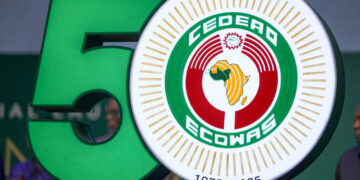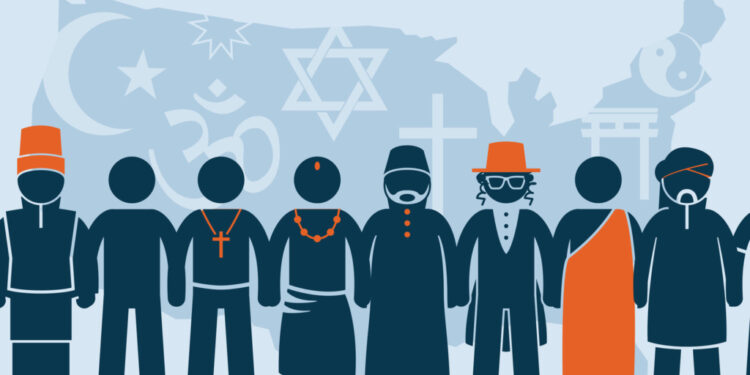Introduction
Ghana has long been lauded as a beacon of religious tolerance in West Africa, a narrative deeply ingrained in both national identity and international perception. This notion, often presented as an immutable truth, suggests a society inherently immune to the sectarian strife plaguing other regions. However, like many deeply held beliefs, the absolute nature of this claim warrants rigorous scrutiny, especially in the face of evolving security threats.
History is filled with examples of seemingly self-evident truths that, upon closer examination and scientific inquiry, proved to be fundamentally flawed. Such debunking of long-held notions underscores the critical importance of evidence-based analysis over assumptions, particularly when formulating strategies to address complex challenges like terrorism. Without subjecting these deeply embedded narratives to empirical investigation, we risk misinterpreting reality and, consequently, developing ineffective or even counterproductive policies.
North Africa, the Sahel and Coastal West Africa Religious Demographics
The geographical and religious landscape of North Africa and the Sahel presents a stark contrast to the often-touted religious diversity of coastal West Africa. In the Sahelian belt, there is a clear trend towards Muslim-majority populations, creating a context where the extremist groups, claiming an Islamic identity, can frame their violent ideologies as an internal religious purification rather than an external invasion. This dynamic presents unique challenges to counter-terrorism efforts, as it necessitates a nuanced understanding of internal religious discourse and potential fault lines.
Religious Demographics of North Africa and the Sahel
As of 2020, the Middle East-North Africa region, which includes a significant portion of North Africa, is home to 440 million people, with Muslims constituting a vast majority at 94%. Christians represent a smaller minority at 3%, concentrated heavily in Egypt (Pew Research Center, 2025). Within the broader Sub-Saharan African context, which encompasses the Sahel, Muslims make up about a third of the population (Pew Research Center, 2025). However, specifically in West Africa, the sub-region is predominantly Muslim, projected to reach 55.6% of the population by 2030 (Pew Research Center, 2011).
Key Sahelian countries and their estimated religious distributions (mid-2023 figures, where available, or most recent reliable estimates):
- Niger: Predominantly Muslim, with estimates around 98.3% Muslim, 1.7% Christian, and a very small percentage of indigenous beliefs (U.S. Department of State, 2023 International Religious Freedom Report).
- Mali: Overwhelmingly Muslim, with approximately 95% Muslim, 2% Christian, and 3% traditional indigenous beliefs (U.S. Department of State, 2023 International Religious Freedom Report).
- Burkina Faso: Majority Muslim, with estimates around 63.8% Muslim, 26.3% Christian, and 9% traditional indigenous beliefs (U.S. Department of State, 2023 International Religious Freedom Report).
- Mauritania: Nearly 100% Muslim (U.S. Department of State, 2023 International Religious Freedom Report).
- Chad: Majority Muslim, with figures generally indicating around 52.1% Muslim, 44.1% Christian, and 3.8% animist/other (U.S. Department of State, 2023 International Religious Freedom Report).
For these countries, where Islam is the overwhelming majority religion, the narrative employed by extremist groups that claim to represent “true” Islam can be particularly insidious. It reframes the conflict not as an external imposition, but as an “internal” struggle for religious purity, potentially fracturing social cohesion along existing religious lines thus making the population even though severely impacted see it as “our” problem and wouldn’t need to point fingers at “others”.
Religious Diversity in Coastal West Africa
In contrast, coastal West African countries often exhibit a much more diverse religious landscape. While Islam has a significant presence, Christianity and traditional indigenous beliefs also hold substantial proportions, with no single religion always constituting an outright majority. This historical coexistence has often been cited as evidence of inherent religious tolerance. However, the escalating Sahelian threat introduces a critical, untested variable. The proximity of these violent groups, and their explicit targeting of diverse populations, could significantly strain the existing fabric of religious harmony. Understanding the precise religious breakdown in these nations is paramount for anticipating vulnerabilities and designing effective preventative measures.
Here are the religious distributions and population figures for selected coastal West African countries (mid-2023 estimates, where available, or most recent reliable data):
| Country | Population (approx. 2023) | Christian (%) | Muslim (%) | Traditional/Indigenous Religions (%) | No Religion/Other (%) |
| Ghana | 33.8 million | 71.3 | 19.9 | 3.2 | 5.6 |
| Côte d’Ivoire | 29.4 million | 39.8 | 42.5 | 2.2 | 15.5 |
| Togo | 8.7 million | 42.3 | 14.0 | 36.9 | 6.8 |
| Benin | 13.7 million | 52.2 | 24.6 | 17.9 | 5.3 |
| Nigeria | 223.8 million | 45.5 – 54.2 | 45.5 – 53.5 | 0.3 – 1.9 | Varies |
| Senegal | 17.7 million | 3.3 | 96.6 | 0.1 | 0.0 |
| Guinea | 14.2 million | 7.0 | 89.0 | 2.0 | 2.0 |
| Sierra Leone | 8.9 million | 22.0 | 77.0 | 1.0 | 0.0 |
| Liberia | 5.5 million | 84.9 | 12.0 | 0.5 | 2.6 |
The significant diversity in these coastal states, particularly in countries like Ghana, Côte d’Ivoire, Togo, Benin, and Liberia, highlights a critical difference in the potential impact of Sahelian extremism. While these nations have historically managed religious coexistence, the unprecedented external pressure from religiously-motivated violence could expose underlying fragilities. It is no longer sufficient to assume tolerance; rather, it is imperative for national security strategists to quantitatively and qualitatively assess the actual levels of religious tolerance within their populations, identify potential flashpoints, and proactively design strategies for counter-terrorism efforts, communication, education, and sensitisation that are informed by these precise demographic and sociological realities. This proactive approach will be crucial in preventing the Sahelian crisis from metastasizing into broader religious conflict within the ostensibly “tolerant” coastal states.
Looking Closely at Ghana
Ghana’s reputation for religious tolerance is deeply woven into its national identity, often highlighted by the seamless coexistence of Christians and Muslims within families and communities. However, an objective examination, particularly by one well-versed in both religions, reveals that this presumed tolerance, while largely genuine in everyday interactions, may not be as robust or unconditional as commonly believed, especially when confronted with external pressures and ideological narratives. The changing dynamics in preaching and sermons, coupled with reactions to global religious events, offer crucial insights into the evolving landscape.
Shifting Dynamics in Religious Discourse
From the perspective of an objective observer deeply familiar with both Christianity and Islam in Ghana, subtle yet significant shifts are discernible in contemporary religious discourse. While mainstream sermons and teachings continue to emphasize peace, coexistence, and mutual respect, there are undercurrents that warrant attention:
- Increased Apologetics and Identity Assertion: In recent years, both Christian and Muslim preachers, particularly within the more charismatic and evangelical Christian movements and certain Salafist-influenced Muslim communities, have shown a growing tendency towards asserting their respective religious identities and defending their doctrines. While not inherently problematic, this can sometimes lead to comparative theology that, if not handled carefully, can unintentionally create a “them vs. us” mentality. Debates on theological issues once largely confined to scholarly circles, now occasionally feature in more public discourse, potentially highlighting differences rather than commonalities.
- The Influence of Digital Media: The proliferation of social media and online platforms has democratised religious discourse, allowing individuals to access a vast array of global religious content, some of which promotes divisive or exclusivist interpretations. This unfiltered access can bypass the traditional gatekeepers of religious authority, exposing followers to radical narratives that might challenge Ghana’s traditionally moderate religious environment (Nonterah, 2015). Young people, in particular, are susceptible to these influences, making education and sensitisation through these very channels crucial.
The Middle East Conflict: A Litmus Test for Ghanaian Tolerance
The ongoing conflict in the Middle East, particularly the Israeli-Palestinian and Israeli-Iranian conflicts, serves as a poignant example of how global religious events can expose latent divisions within Ghanaian society, challenging the deeply held notion of unwavering religious tolerance.
When news of the conflict saturates media channels, a predictable, and concerning, pattern often emerges:
- Religious Alignment over National Identity: Many Ghanaian Muslims frequently express solidarity with the Palestinian and Iranian cause, viewing it through a lens of Islamic brotherhood and perceived oppression of fellow Muslims. Their support often manifests in online discourse, discussions in mosques, and sometimes in public demonstrations, highlighting the religious dimension of the conflict. For instance, reports indicate some religious scholars and political figures calling for Ghana’s solidarity with Palestine (Iran Press, 2023).
- Christians Sympathise with Israel: Conversely, a significant portion of Ghanaian Christians, often express strong support for Israel, often rooted in theological interpretations of biblical prophecy and a sense of shared Abrahamic heritage. This support is evident in prayer meetings, social media discussions, and sometimes in public statements by Christian leaders.
What becomes apparent in these reactions is a tendency for individuals to align with “their” religious faction on the global stage, sometimes overshadowing their shared national identity as Ghanaians. The discourse, both public and private, often reflects a “Muslim side” and a “Christian side” to the conflict, rather than a unified Ghanaian perspective. This fragmentation, while not necessarily leading to overt conflict within Ghana, subtly erodes the fabric of inter-religious harmony. It suggests that while Ghanaians may generally coexist peacefully, their underlying religious convictions can be deeply ingrained, to the extent that they influence reactions to external events, potentially testing the limits of their “so-called tolerance” (Asante, 2012).
The Imperative of Measurement and Tailored Policies
This observable phenomenon underscores why a scientific, evidence-based approach to understanding religious tolerance in Ghana is not merely academic, but a national security imperative. The assumption that historical religious harmony will automatically withstand new, externally-driven pressures is dangerous.
By quantifying and measuring the actual levels of religious tolerance, identifying potential ideological vulnerabilities, and understanding the nuances of inter-religious relations, Ghana can:
- Inform National Security Strategy: A clear understanding of societal fault lines, however subtle, allows for the development of national security strategies that proactively address religious radicalisation and prevent the infiltration of extremist ideologies from the Sahel. This involves not just military and intelligence responses, but also robust social and psychological countermeasures.
- Tailor Counter-Terrorism Efforts: Effective counter-terrorism is not a one-size-fits-all approach. Knowing precisely where the vulnerabilities lie within different religious communities enables the creation of bespoke counter-narratives and community engagement programs that resonate with specific demographics, rather than broad, ineffective campaigns.
- Guide Communication for Education and Sensitisation: Understanding the precise nature of existing biases or misinterpretations allows for the development of targeted educational and sensitisation campaigns. These campaigns can address specific misconceptions, promote authentic interfaith dialogue, and reinforce the primacy of Ghanaian national identity over external religious allegiances. For instance, rather than simply stating “we are tolerant,” campaigns could focus on specific areas of tension revealed by data, fostering genuine understanding and empathy between different religious groups. Research into the influence of religion on electoral politics in Ghana, for example, highlights the significant role religious leaders play as influencers, underscoring the need for strategic engagement in communication efforts (ResearchGate, 2025).
This exercise should be conducted first and foremost within the entire security apparatus as they would be at the forefront in dealing with the security threats thus imperative to measure their tolerance.
Then, a well-represented sample that captures the reflection of the Ghanaian population should also part take in order to make an inference on the total population’s religious tolerance.
The experiment should measure scientifically:
- Religious Tolerance
- Perception or understanding of what terrorism is, in a more general context
- Perception or understanding of what religious terrorism is
- Islamist Terrorism globally but particularly those In the Sahel
Conclusion
In conclusion, while Ghana’s history of religious tolerance is commendable, the rising tide of Sahelian extremism demands a proactive and empirical re-evaluation of this long-held notion. The observable reactions to global events like the Middle East conflict, and the evolving nature of religious discourse, serve as critical indicators that the ground beneath Ghana’s seemingly stable interfaith relations may be shifting. Without objective measurement and data-driven insights, policies designed to protect the nation from external threats might miss the internal vulnerabilities that, if left unaddressed, could render the country susceptible to the very divisions it prides itself on having transcended.
References:
Aristotle. (1984). Physics (R. P. Hardie & R. K. Gaye, Trans.). In J. Barnes (Ed.), The complete works of Aristotle, Vol. 1. Princeton University Press. (Original work published ca. 350 BCE)
Galilei, G. (1967). Dialogue concerning the two chief world systems (S. Drake, Trans.). University of California Press. (Original work published 1632)
Kuhn, T. S. (1957). The Copernican revolution: Planetary astronomy in the development of Western thought. Harvard University Press.
Lavoisier, A. (1965). Elements of chemistry (R. Kerr, Trans.). Dover Publications. (Original work published 1789)
Pasteur, L. (1864). Des générations spontanées. Gauthier-Villars.
Pew Research Center. (2011, January 27). Region: Sub-Saharan Africa. Retrieved from https://www.pewresearch.org/religion/2011/01/27/future-of-the-global-muslim-population-regional-sub-saharan-africa/
Pew Research Center. (2025, June 9). 12. Religion in the Middle East and North Africa. Retrieved from https://www.pewresearch.org/religion/2025/06/09/religion-in-the-middle-east-and-north-africa/
Pew Research Center. (2025, June 9). 14. Religion in sub-Saharan Africa. Retrieved from https://www.pewresearch.org/religion/2025/06/09/religion-in-sub-saharan-africa/
Ghana Statistical Service. (2021). 2021 Population and Housing Census: Religious Characteristics. (Specific report on religion can be found on the GSS website, e.g., in information sheets or detailed reports).
Institut National de la Statistique. (2021). Recensement Général de la Population et de l’Habitat 2021. (Data commonly cited in sources like Wikipedia: “Religion in Ivory Coast – Wikipedia” which cites the official census results).
U.S. Department of State. (2023). 2023 International Religious Freedom Report: Togo. Retrieved from https://www.state.gov/reports/2023-report-on-international-religious-freedom/togo/
Wikipedia. (n.d.). Religion in Benin. Retrieved July 17, 2025, from https://en.wikipedia.org/wiki/Religion_in_Benin (Cites 2020 Pew Research Group estimates).
Afrobarometer. (2022). Nigerians view religious leaders as more trustworthy, less corrupt than public institutions. [Policy Brief].
Wikipedia. (n.d.). Religion in Nigeria. Retrieved July 17, 2025, from https://en.wikipedia.org/wiki/Religion_in_Nigeria (Collates various sources including Pew Research).
Wikipedia. (n.d.). Religion in Senegal. Retrieved July 17, 2025, from https://en.wikipedia.org/wiki/Religion_in_Senegal (Cites 2020 Pew estimate).
Wikipedia. (n.d.). Religion in Guinea. Retrieved July 17, 2025, from https://en.wikipedia.org/wiki/Religion_in_Guinea (Cites 2022 estimates).
Wikipedia. (n.d.). Religion in Sierra Leone. Retrieved July 17, 2025, from https://en.wikipedia.org/wiki/Religion_in_Sierra_Leone (Cites 2020 Pew Research Center and Inter-Religious Council of Sierra Leone estimates).
Liberia Institute of Statistics and Geo-Information Services (LISGIS). (2022). Liberia National Population and Housing Census 2022. (Data commonly cited in sources like Wikipedia: “Religion in Liberia – Wikipedia” which cites the 2022 census results).
Asante, K. (2012). Ethnicity, Religion, and Conflict in Ghana: The Roots of Ga Nativism. African Studies Quarterly, 14(1), 81-100.
Iran Press. (2023, November 4). Religious scholar: Ghana stands with Palestine, Israel deserves to be isolated.5 Retrieved from https://iranpress.com/content/237509/religious-scholar-ghana-stands-with-palestine-israel-deserves-isolated
Nonterah, N. K. (2015). The Challenges of Interfaith Relations in Ghana. SciSpace. Retrieved from https://scispace.com/papers/the-challenges-of-interfaith-relations-in-ghana-cfh9jiln19
ResearchGate. (2025, May 13). The Influence of Religion on Electoral Politics in Ghana: The 2024 General Election. Retrieved from https://www.researchgate.net/publication/391646486_The_Influence_of_Religion_on_Electoral_Politics_in_Ghana_The_2024_General_Election
U.S. Department of State. (2023). 2023 International Religious Freedom Report: Ghana. Retrieved from https://www.state.gov/wp-content/uploads/2024/04/547499-GHANA-2023-INTERNATIONAL-RELIGIOUS-FREEDOM-REPORT.pdf






























